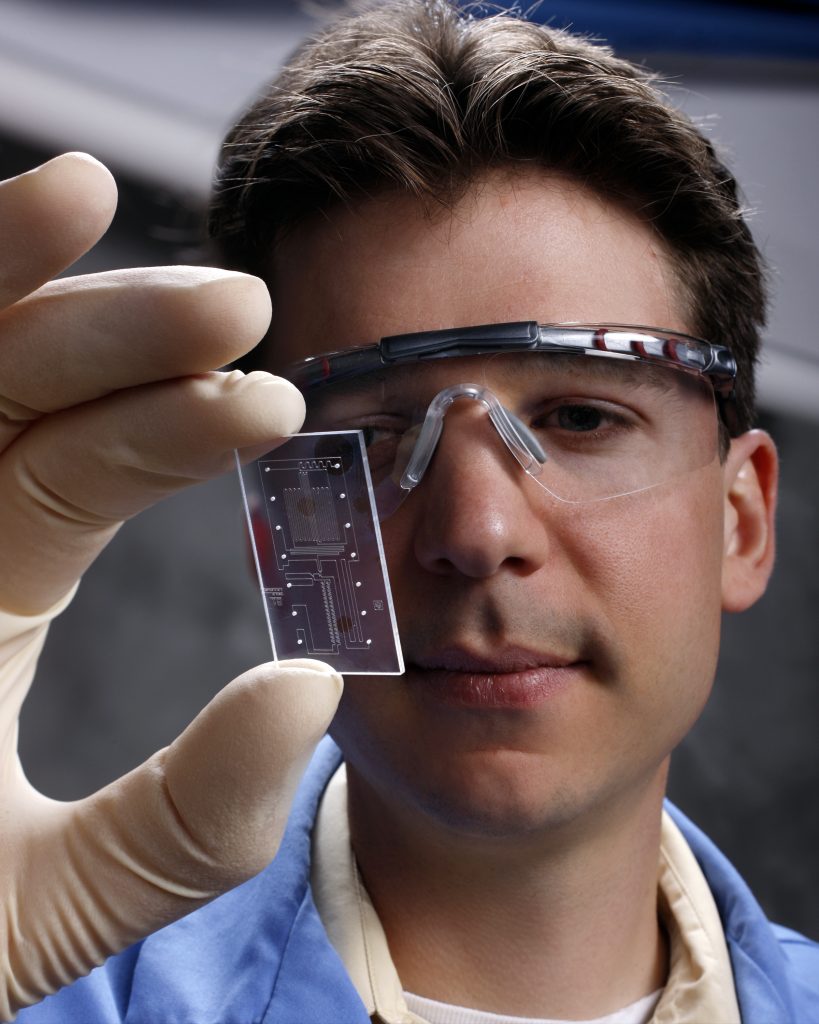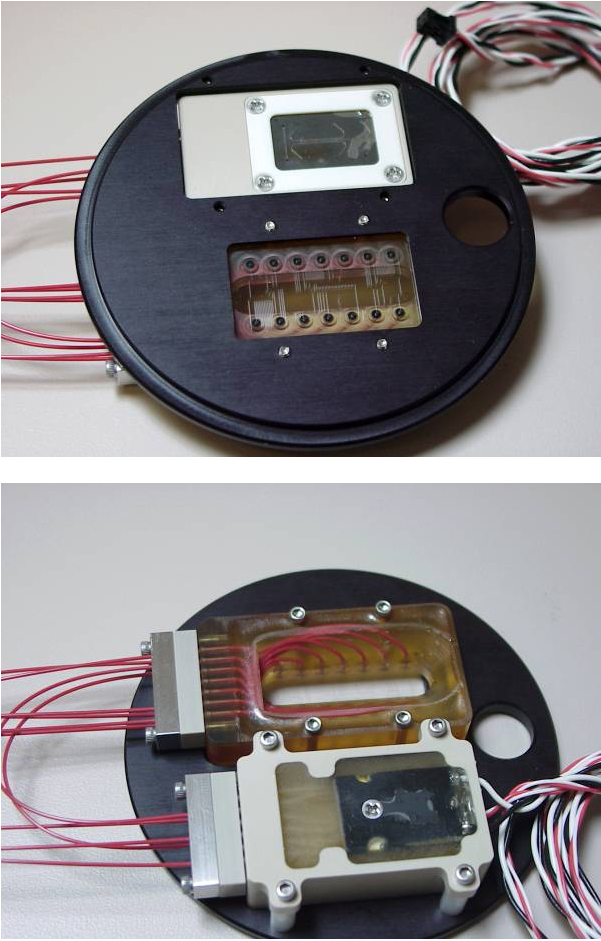
Livermore, Calif. — Sandia National Laboratories is seeking commercial partners to license or contribute to the continued development of a new lab-on-a-chip platform for high-throughput manipulation and interrogation of individual cells, one that enables quantitative analysis of cellular behaviors with unprecedented speed, resolution, sensitivity, and multiplexing.
The Microscale Immune and Cell Analysis (MICA) platform is an extremely versatile tool that can facilitate study of a wide variety of cellular processes. It has consistently demonstrated its value in initial applications at Sandia, which have focused on elucidation of immune cell responses to potentially deadly microbial pathogens.
MICA seamlessly integrates cell culture and handling, cell stimulation (e.g., introduction of a pathogenic challenge), fluorescence-activated cell sorting (FACS), flow cytometry, high-resolution imaging, and antibody-based proteomic analysis. All experimental manipulations are carried out at the microscale and are fully automated, providing exquisitely precise control over each cell and its environment. The closed-system format lends itself well to applications in which containment is desirable (e.g., work with dangerous pathogens). Moreover, because microscale experiments consume vanishingly small amounts of cells and reagents, MICA can be used to investigate cellular processes that have proven impossible or impractical to study at conventional scale.
MICA offers a broad array of benefits over alternative approaches:
- Better measurements. Scaling advantages of microchannels provide unprecedented temporal (millisecond) and spatial (micrometer) control over cell environments, and MICA’s systems integration and automation eliminates manual steps and the errors associated with them.
- Faster, more efficient measurements. Researchers can use MICA to measure multiple cellular events rapidly and in parallel, without requirement for large quantities of cells and expensive reagents.
- New measurements. MICA offers the opportunity to perform experimentation and measurement at single-cell resolution, which is not possible using conventional FACS or proteomic techniques.
- Multiplexed measurements for systems understanding. MICA integrates several different analytical techniques in a unified platform, enabling parallel measurement of different types of cellular event (protein expression, localization, modification, and interaction). Consequently, correlations between measured events may be observed directly, whereas with conventional approaches such correlations must be inferred from the results of separate experiments.
- Versatility. MICA’s modular format, flexible platform architecture, and convenient packaging (compact footprint fits any standard inverted microscope stage) greatly facilitates operation and dissemination to other laboratories.
“The promise of MICA is immense,” said Glenn Kubiak, director of biological and materials sciences at Sandia’s Livermore, Calif., laboratory. Many of the lab tools used today to study cellular behavior, he said, fall short in speed, throughput, ease, and selectivity.

- Diagnostics. The microfluidic-based platform of MICA is well suited for analysis of small, precious clinical samples (e.g., primary cells, tissue biopsies). Even rare cells may be selectively isolated (via FACS) and analyzed (via flow cytometry, imaging, and/or immunoassay) quickly and efficiently.
- Biomarker discovery. MICA enables identification of complex response profiles through precise quantitation of the expression, secretion, modification, and interactions of proteins in individual cells.
- Personalized medicine. Multiple cell types, drawn from a single patient or from different patients, may be individually analyzed in parallel for extended periods of time, in order to assess the specificity of response to a given treatment.
- Drug discovery and therapeutics. With its multiplexed screening capability, MICA enables quantitative analysis of the responses of multiple cell types to multiple drug candidates in high-throughput, highly parallelized assays.
- Immune and infectious disease. The precision with which MICA manipulates and analyzes cells enables capture of even the most rapid and transient host cell responses to pathogen.
The fully developed MICA platform will provide unparalleled access to realms of biological research that we are only beginning to explore, particularly with respect to systems-level analysis of the behavior of individual cells.
Additional information on MICA, including fact sheets, technical papers, and information on partnering with Sandia, can be found at http://www.ca.sandia.gov/mica/.
